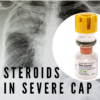CASE
A 76 yo woman is sent in from the nursing home with myoclonic jerks. She has a past medical history of slight dementia and seizures. Her GCS is 13-14/15. On arrival she has constant myoclonic jerks. Initial Blood tests reveal the following:
Na 165
K 3.6
Cl 112
U 12
Cr 112
You make the diagnosis of hypernatraemia. What causes it? How do we correct it?
Hypernatraemia is defined as Na>145mmol/L.
Na>180 mmol/L is associated with high mortality.
Causes of Hypernatraemia
Lets think of this simply; its either too much water out or not enough water in. In more detail:
- Decrease in water intake: This can be for a variety of reasons, from not having water to not being able to communicate thirst, to disordered thirst perception. Water loss will usually stimulate thirst at osmolality > 280 mosmol/L
- Increased water loss, more than salt loss
- Losses from GIT or Skin
- Renal Disease affecting concentrating ability
- Diabetes insipidus
- Inadequate salt intake
- Mineralcorticoid: Primary Hyperaldosteronism
- Glucocorticoid: Cushings
The two important processes that help maintain normal body sodium are:
- Thirst response: This is stimulated secondary to increased tonicity(>280 mosmol/L)
- Antidiuretic Hormone secretion: If this is decreased there are significant renal losses.
How The Patient Presents
The hypernatraemic patient presents with a range of symptoms mainly of the central nervous system, that progress and include:
- Lethargy
- Tremor/Twitching
- Ataxia
- Seizures
- Coma
Classification of Hypernatraemia
HYPOVOLAEMIC HYPONATRAEMIA
There is a loss of both water and sodium, but more water is lost in comparison.
This includes renal causes such as use of diuretics or diabetes insidious. It also includes extra-renal causes such as vomiting and Diarrhoea, skin losses and losses in burns.
EUVOLAEMIC HYPERNATRAEMIA
This is the MOST COMMON form of hypernatraemia and reflects pure water losses.
It occurs where there is restricted water intake, secondary to restriction, altered thirst perception, or other causes preventing the patient from communicating their thirst.
HYPERVOLAEMIC HYPERNATRAEMIA
This is uncommonly seen and occurs where more salt than water is added. It can occur secondary to the use of sodium bicarbonate or hypertonic saline.
How to correct the Hypernatraemia.
The answer is SLOWLY over 24- 48 hours, with a maximum drop of 10-12mmol/L over the 24 hours. Rapid correction can result in cerebral oedema and seizures.
ACUTE HYPERNATRAEMIA(Onset < 48 hours)
This is not very common. It occurs in salt poisoning or Nephrogenic Diabetes Insipidus.
In Acute poisoning we can reduce at a rate of 1-2 mol/L /hour
CHRONIC HYPERNATRAEMIA(Onset >48 hours)
In this case we can lower the sodium at 0.5mmol/L/hr
What is the Fluid Deficit?
Calculate total body water: Weight x (0.5 for males) or (0.45 for females)
Calculate the total water deficit TWD = TBW x (1- (Na desired/ Na actual))
For a Na of 165 mmol/L
TBW = 0.45 x 60 = 27L
TWD = 27 x (1-140/165) = 4.1L
What Fluid Do I use and how quickly can I give it?
In the HYPOVOLAEMIC Patient, isotonic saline can be used for volume restoration, then 0.45% Saline or 5% Dextrose.
In ACUTE HYPERNATRAEMIA use 5% DEXTROSE or 0.45% Saline, can be used with an aim of reducing the Na by 1-2mmol/L/hr.
In CHRONIC HYPERNATRAEMIA reduction should be slower. Consider giving half the deficit in the first 6-12 hours and the rest over the next 24-48 hours.
Remember in all of the above to add the other loses during the period the fluid is being given over.
What Effect would 1L of a particular fluid have on Na concentration?
This is important as it allows us to quickly calculate the effect of a fluid, that we may have to give quickly, for example in the hypernatraemia, hyperglycaemic, hyperosmolar patient.
[table id=4 /]Change in Na(with 1 L of fluid)= (Na in fluid-Serum Na)/(TBW +1)
For example if the serum Na was 165mmol/L and 1 L of Sodium Chloride 0.9% were given:
The serum Na would change by= 154-165/28=-0.39 mol/L ie a drop of 0.4mmol.
This is an important calculation especially in the diabetes case. Remember that rapid correction of tonicity in children leads to cerebral oedema. In the older patients the onset of hypertonicity can lead to osmotic demyelinating syndrome.











Hypernatraemia – Resus
abdevvrfeo
[url=http://www.g27aq3mycx8o73bg574kd36xnt25957ks.org/]ubdevvrfeo[/url]
bdevvrfeo http://www.g27aq3mycx8o73bg574kd36xnt25957ks.org/
35 Carbamide Peroxide Teeth Whitening Gel
Downlight Ceiling
Valves
スーパーコピー腕時計は腕時計職人の工芸の傑作です
人気海外ブランドスーパーコピー専門店ブログ
Products
アイフォンケース手帳型手帳型ケースブランドコピー
Esd Blister Packaging
Gucciグッチネックレススーパーコピー
Grass Sod Cost
Chanelシャネルバッグスーパーコピー
China Insulated Glass Panels
Fendiフェンディ帽子スーパーコピー
Erw Pipe Production Line
Austenitic Window Hinges
Chanelシャネル指輪スーパーコピー
Homemade Shirt Folder
Diorディオールネックレススーパーコピー
LouisVuittonルイヴィトン指輪スーパーコピー
3 Pin Female Plug Connector
Vertical Shaft Gearbox
Hermesエルメスバッグスーパーコピー
Aluminum Foil Tape Refrigerator
ブランドGucciグッチサングラスコピーN級品
Bvlgariブルガリコピー激安
go anywhere toilet
Handloom Weaving Machine
Balenciagaバレンシアガ靴コピー
Best Seed Planter
Rolexロレックス時計販売店
50lbs Small Sand Sack
ブランドMiuMiuミュウミュウ靴コピーN級品
Chanelシャネルスマホケース販売店
KTS-850
Rubber Industries
ブランドChanelシャネルマフラーコピーN級品
スーパーコピーバッグ
Metal Cnc Machining Service
ブランドFendiフェンディベルトコピーN級品
animatronic giraffe
Celineセリーヌバッグコピー
12.7mm Steel Strand
コピー時計
Elliptical Hdpe Pipe
Stainless Steel Sheet Metal
スーパーコピーブランド
コピー時計
C N C Laser Cutting Machine
Bryan Cave Leighton Paisner – JDSupra
RogerVivierロジェヴィヴィエ靴スーパーコピー
Electric Scooters Off Road
ブランド時計コピー
Set Top Box Offers
ブランドブレスレットコピーN級品
ブランドDiorディオールマフラーコピーN級品
86-Inch Infrared Finger Touch Smart Board Interact
Bottles Plastic
ブランドGucciグッチ靴コピー代引き
ブランドBvlgariブルガリ時計コピーN級品
China Supplier Stackable Hdpe Plastic Pallet For Heavy Goods
ブランド財布コピー
agar thickener food grade
Burberryバーバリーベルトスーパーコピー
Safely moving back to my metro home ? TechnoCodex
1500nm Edfa Optical Amplifier
ブランドコピー代引き
Burberryバーバリーバッグコピー
Fashionable clothes
Lady Sport Wear Price
LouisVuittonルイヴィトンブレスレットコピー
Carbide Circular Saw
ブランドコピー代引き
ブランド財布コピー
Tool Setting Measuring Gauge
スーパーコピーブランド
Wardrobe Armoire
Featured Products